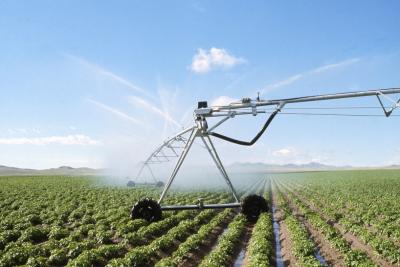Global Agricultural Green and Blue Water Consumption Under Future Climate and Land Use Conditions
Future climate and land use conditions are two major drivers of crop consumption of green water (precipitation) and blue water (irrigation). However, projections of crop green and blue water consumption under an internally consistent set of future climate and land use conditions are still lacking. Researchers at the U.S. Department of Energy’s Pacific Northwest National Laboratory explicitly considered the effects of both factors in a consistent modeling framework. The research team found that global crop green and blue water consumption are projected to increase by about 12% and 70%, respectively, by the 2090s. Projections showed that future climate conditions and expansion in the irrigated area were the main drivers of the increased crop green and blue water consumption, respectively.
This study provides a more comprehensive understanding of changes in global crop water consumption than earlier studies, which usually examined this topic through the lens of a single factor—i.e., either climate or land use—or did not include the inherent connections between climate, land, and socioeconomics. The results in this study advance our understanding of how changes in global crop water consumption can affect the sustainable use of freshwater and related food security. This understanding is critical to devise effective adaptation strategies for securing future food and water needs sustainably.
To address the effects of using green water (precipitation) and blue water (sourced from rivers, lakes, and aquifers), researchers incorporated a crop-water use module into the Global Change Assessment Model’s (GCAM) hydrologic module (Xanthos). Crop-specific green and blue water consumption is calculated on a monthly timestep at a global 0.5-by-0.5-degree grid scale with the aid of climate inputs from Earth System Model (ESMs) and land use projections from GCAM.
Results showed that from the historical period (1971‒2000) to the 2090s, global crop green water consumption was projected to increase by 12%. Findings also indicated that the contribution of the climate signal to global crop green water consumption would be larger than that of land-use change. Global crop blue water consumption was projected to increase by 70% by the end of this century, with expansion in irrigated area as the main driver. In terms of the spatial patterns, climate dominated regional changes in crop green water consumption except in some developing regions (e.g., Africa, central Asia, the Middle East, and Pakistan). Changes in irrigated area dominated the changes in crop blue water consumption in most global regions, especially in regions with significant irrigated land expansion (e.g., northern Africa, central Asia, China, Mexico, the Middle East, Russia, southern Asia, and Argentina).

